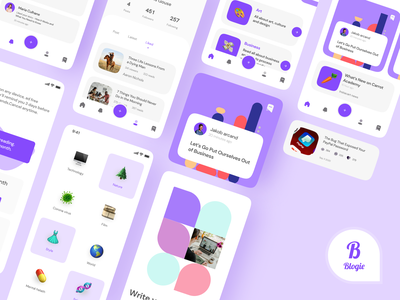
Adaptive design comes with its benefits and drawbacks. In this article, we will discuss Breakpoints of adaptive design, the Benefits of implementing this technology, and Regulatory issues surrounding adaptive designs. This information should help you choose the right design approach for your clinical trials. Feel free to leave a comment if you have questions. We'd love for you to get in touch with us! If you are looking for more information, check out our other articles.
Breakpoints in adaptive design
In adaptive design, breakpoints refer to the screen sizes on which your website will display. Your website's adaptability is measured by the landing pages. Although you don't need to create a website for every device in the same way, you can target specific templates for each device group. Adaptability is the best way to keep your website consistent across all devices.
Understanding how breakpoints work is the next step in adapting a website. CSS media queries define the breakpoints based on device and screen resolution. This allows design to adapt to future changes and to scale to the user's preferences. One example is a desktop site that has two content boxes, but a smartphone might only have one column. It is also important to set breakpoints for responsive web design.

Methods of implementing adaptive designs
Companies must decide whether they want to go with adaptive or responsive design when creating websites. The adaptive design option is better for websites that support multiple screen sizes and different devices. While the responsive design option is better for sites that are optimized for fixed-sized screens, the former is better. The former eliminates variables related to multiple device types and allows designers focus on designing for the device with the highest usage. This is not a good choice for small teams.
Adaptive designing has many advantages and can be used for clinical trials. It can be used by companies to determine the most efficient dosage and regimen. It may also allow for the abandonment of suboptimal options and improve the acceptance of studies to all stakeholders. Because fewer subjects are exposed, this flexibility can be beneficial for ethics. This is especially important for rare conditions. Companies can increase their clinical trials through adaptive design. They will be able to attain the desired clinical benefit quicker.
Benefits of adaptive design in clinical trials
While adaptive design in clinical trials may have many benefits, it's important to do it right. An adaptive trial that is well designed can help identify potential signals and increase the likelihood of a successful clinical study. The FDA supports adaptive design and has supported its use. There are still risks involved in adapting a trial. This article explains the benefits of adaptive design for clinical trials.
The chances of finding the true effects of a product are higher with adaptive design. Reduced sample size and time periods mean that patients are enrolled at a lower rate. A smaller study population can be used to accelerate recruitment time and cut costs for sponsors. Adaptive trials are also a way to expand trials that are not sufficiently powered. They are not appropriate for all types or clinical trials. FDA has provided draft guidance for adaptive design in clinical trial.

Regulatory concerns regarding adaptive design
In 2004, the FDA released its Critical Path Initiative report, which outlined its views on the medical product pipeline. The FDA noted that although the rate at which discoveries are translated into products is slowing, overall spending on product development has risen dramatically. This report, as well as a series influential whitepapers, helped adaptive design become more popular. But how does it relate to the regulations for medical devices?
For example, the CHMP's draft guidance notes that adaptive designs should be fully described in the protocol, allowing for full sponsor involvement in the clinical trial. FDA is currently unable to approve designs based solely on unblinded and group sequential interim analyses. Sponsors may need to explore different dose selection scenarios during interim analyses in order to approve such a trial. But adaptive designs have many advantages that make them an excellent choice in trials with rapid patient recruitment and followup.
FAQ
Do I Need Any Technical Skills To Design And Build My Site?
No. You just need to be familiar with HTML and CSS. There are many tutorials available online that can teach both HTML or CSS.
Can I make my website using HTML and CSS?
Yes! If you've followed the steps, you should now be able create your website.
You're now familiar with the basics of creating a website structure. However, you must also learn HTML and CSS Coding.
HTML stands for HyperText Markup Language. Think of it like writing a recipe for a dish. It would list the ingredients, directions, and how to do it. HTML allows you to indicate to a computer which portions of text are bold, italicized and underlined. It also lets you know which part of the document is linked. It is the language of documents.
CSS stands for Cascading Style sheets. It is like a stylesheet that you use to create recipes. Instead of listing each ingredient or instruction, you will write down the general rules for font sizes and spacing.
HTML tells the browser how to format a web page; CSS tells it how to do it.
You don't have to be a prodigy if you don’t get the terms. Follow these tutorials to create beautiful websites.
Should I use WordPress or a website builder?
Start small to create a strong web presence. If you have all the resources and time, then build a website. A simple blog is a good option if you don’t yet have the necessary resources. As you become proficient in web design and development, you can add features as needed.
But before you build your first website, you should set up a primary domain name. This will provide a point to which you can publish content.
Where can you find freelance web developers?
There are many places you can find freelance web designers or developers. These are the top options:
Freelance Websites
These sites offer job postings for freelance professionals. Some have very strict requirements, while some don't care which type of work it is.
Elance has many high-quality positions for writers, programmers (programmers), editors, translators and managers.
oDesk offers similar features but focuses on software development. They offer positions in PHP and Java, JavaScripts, Ruby, C++, Python, JavaScripts, Ruby, iOS, Android, as well as.NET developers.
oWOW is another good option. Their site is focused on web designers and graphic artists. They offer writing, video editing and programming as well as SEO, social media marketing, website design, and many other services.
Forums online
Many forums allow members to post jobs and advertise themselves. DeviantArt, a forum for web designers, is one example. A list of threads will appear if you type "web developer” in the search box.
Statistics
- When choosing your website color scheme, a general rule is to limit yourself to three shades: one primary color (60% of the mix), one secondary color (30%), and one accent color (10%). (wix.com)
- The average website user will read about 20% of the text on any given page, so it's crucial to entice them with an appropriate vibe. (websitebuilderexpert.com)
- In fact, according to Color Matters, a signature color can boost brand recognition by 80%. There's a lot of psychology behind people's perception of color, so it's important to understand how it's used with your industry. (websitebuilderexpert.com)
- Did you know videos can boost organic search traffic to your website by 157%? (wix.com)
- It's estimated that chatbots could reduce this by 30%. Gone are the days when chatbots were mere gimmicks – now, they're becoming ever more essential to customer-facing services. (websitebuilderexpert.com)
External Links
How To
What is website Hosting?
Website hosting describes where visitors go when they visit a site. There are two types:
-
Shared hosting – This is the most affordable option. Your website files reside on a server owned by someone else. Customers who visit your website send their requests via the Internet over to that server. The request is then handed to the owner of that server.
-
Dedicated hosting - This is the most expensive option. Your website is only accessible from one server. You and your traffic are protected by the fact that no other websites share server space.
Because it is less expensive than dedicated hosting, shared hosting is preferred by many businesses. When you use shared hosting, the company that hosts the server gives you the resources to run your site.
There are pros and disadvantages to each option. These are the key differences between them.
Shared Hosting Pros:
-
Lower Cost
-
Easy to Set Up
-
Frequent updates
-
It can be found on many web hosting companies
Hosting shared with others can cost as low as $10/month. This price often includes bandwidth. Bandwidth refers the data that you can transfer over the Internet. Even if only you upload photos to your blog or website, high-volume data transfers may incur additional charges.
Once you start, you'll quickly realize why you were paying so much for your previous host. Many shared hosts offer very little customer support. You'll be on your way after they walk you through setting it up.
You'll want to look into a provider that offers 24-hour phone support. They will assist you with any problems that may arise while you're sleeping.
Cons of dedicated hosting
-
More Expensive
-
Fewer Common
-
You will need to have special skills
With dedicated hosting you will have everything you need to manage your website. You won't worry about how much bandwidth you are using or how much RAM (random Access Memory) you have.
This means that you will have to pay a little more upfront. However, once you start running your business online, you'll find that you won't need much technical assistance. You'll be able to manage your servers effectively.
Which is better for my business?
It all depends on the type of website you are creating. Shared hosting might be best if you just want to sell products. It is simple to set up and easy to maintain. You'll probably receive frequent updates because you are sharing a server hosting many other sites.
However, dedicated hosting can be a great option if you're looking to build a community around the brand. You can put your efforts into building your brand, and not worry about how to handle your traffic.
Bluehost.com is the best web host for both. They offer unlimited data transfers per month, 24/7 support and free domain registration.